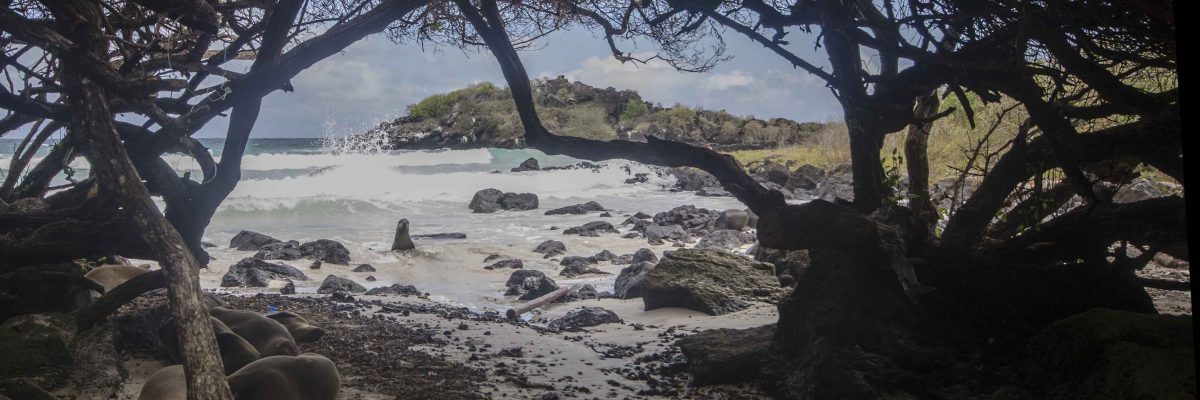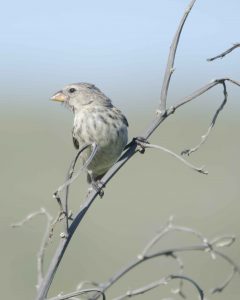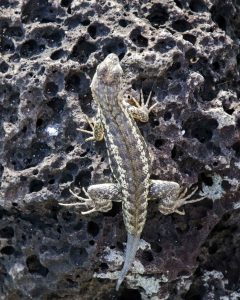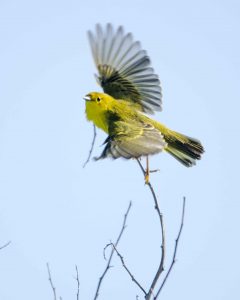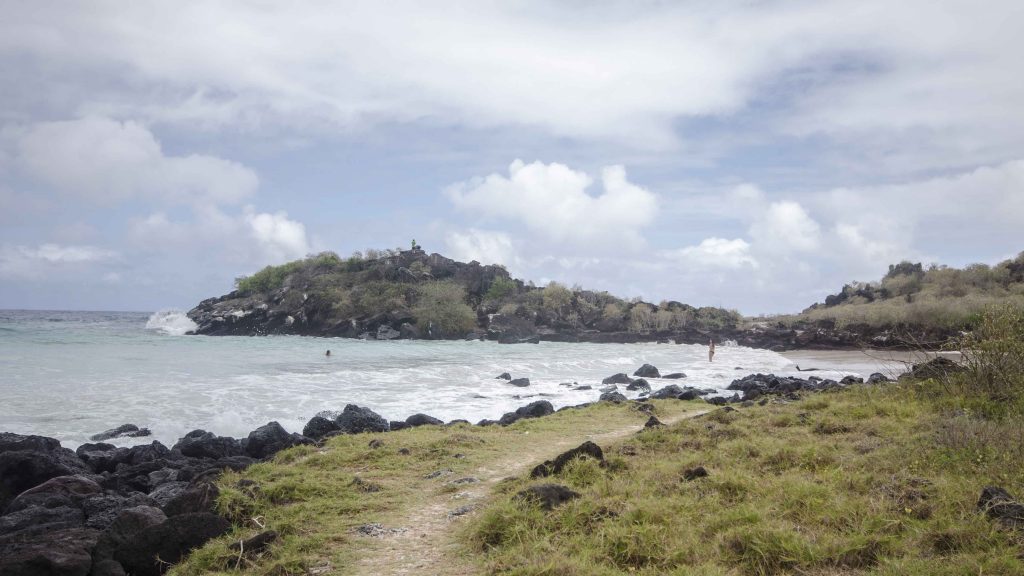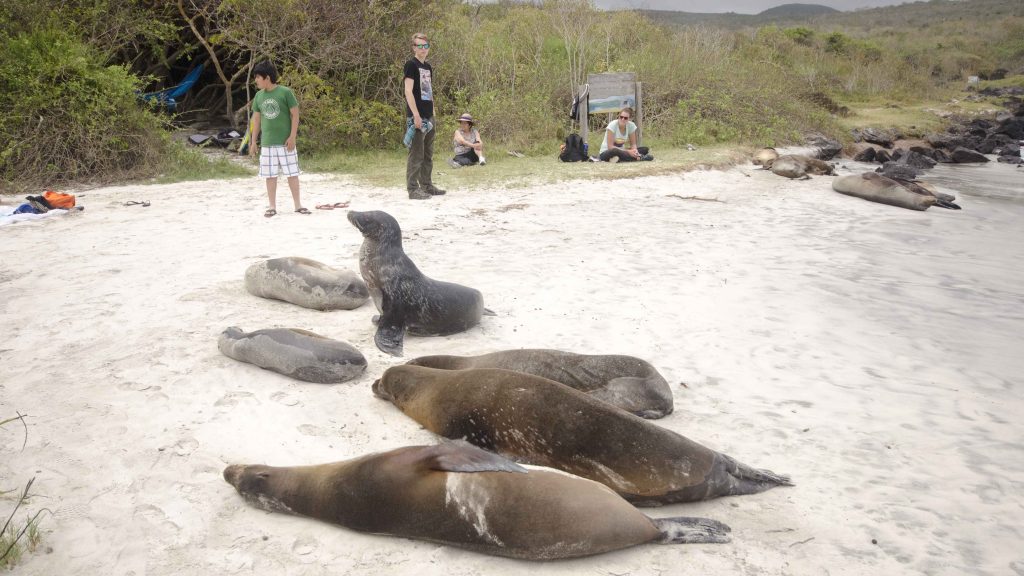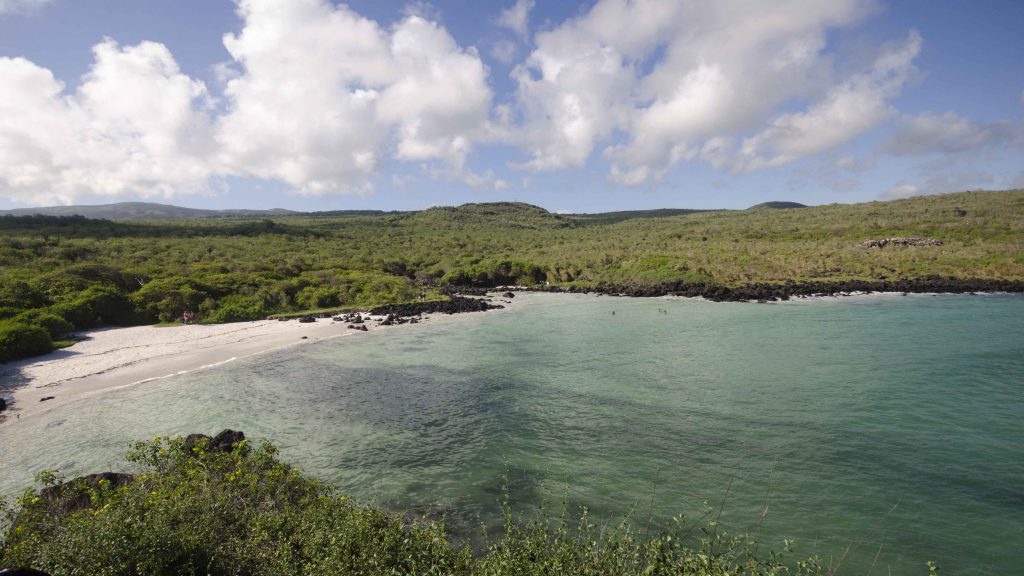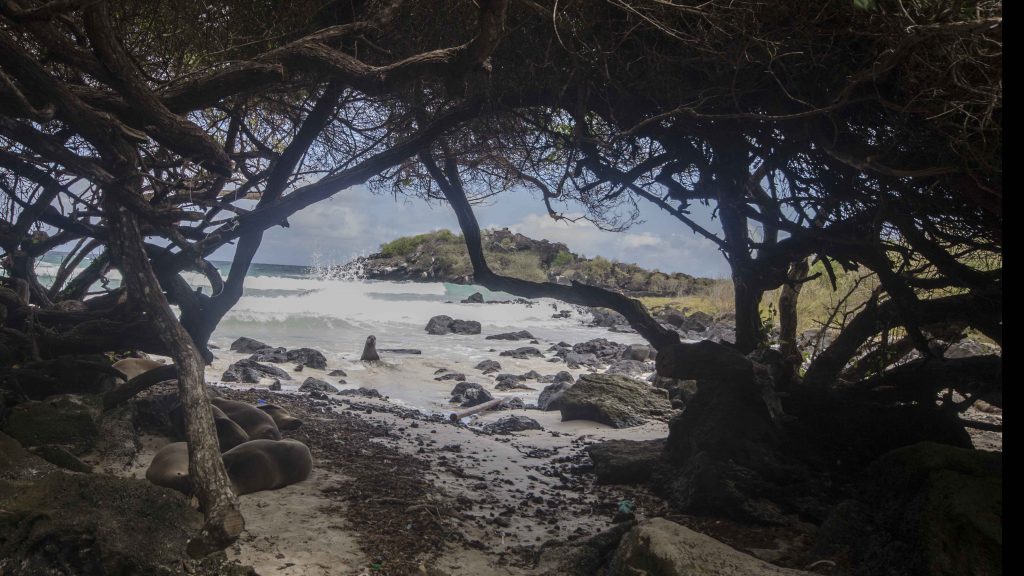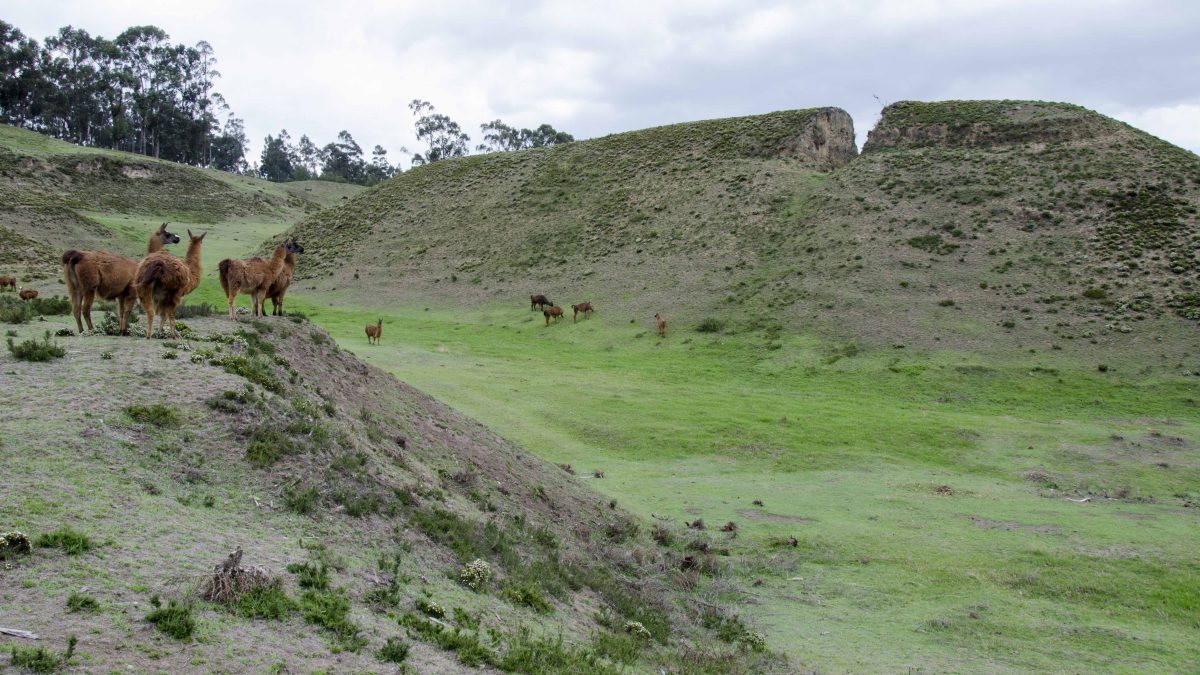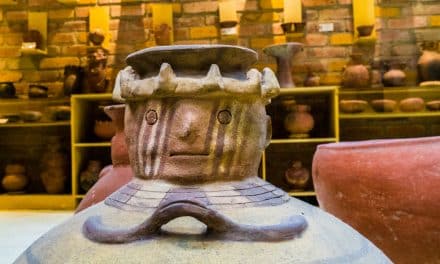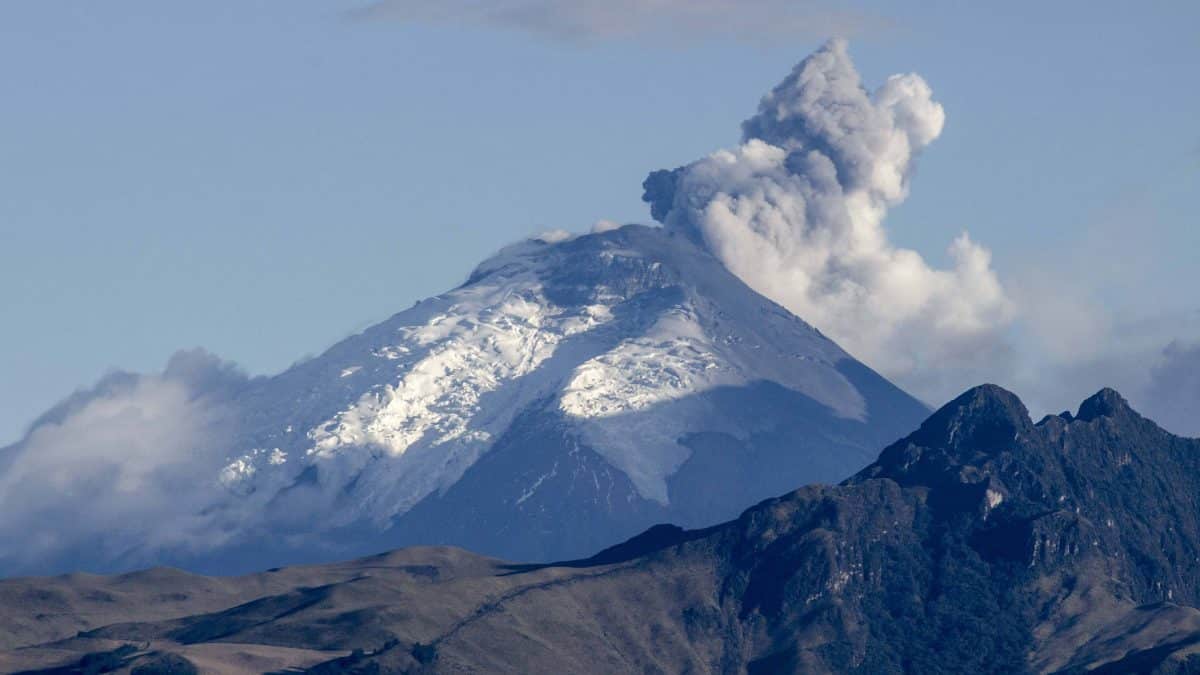As responsible travelers evolve, so do the stories we share.
This article is part of our living archive — trusted content we continue to care for.
First published on October 11, 2016 • Last updated on May 8, 2017.
When we visited Puerto Chino, we weren’t sure what to expect. I imagined a small port and evidence of a long-gone fishing village, probably founded by the Chinese. I couldn’t have been more wrong.
Hike Puerto Chino
Heaven knows why I didn’t read up on Puerto Chino before we went. There was an unexpected hike, for which we came unprepared. The trail is in the full sun. Water is a necessity for this trail, especially in hot weather.
But the trail is great for seeing birds like Galapagos Finches, Mockingbirds, and Yellow Warblers. And the hot sun encourages Lava Lizards to sun on rocks directly along the trail.
- This one of several species of Darwin’s Finch.
- A Lava Lizard found along the trail at Puerto Chino.
- A Yellow Warbler takes flight along the trail to Puerto Chino.
 The area is rife with huge prickly pear cactus that tower over the trail like trees, their ancient trunks practically wooden rather than flesh. These cactuses are often referred to as the Galapagos Prickly Pear and are endemic to the islands. Like Prickly Pear Cactus in the United States, these plants are prolific producers of fruit, edible to humans and animals alike. But humans are not allowed to harvest the fruit here. It needs to remain in the wild for the local wildlife, including the giant Galapagos Tortoise who loves to eat the bright red flesh of this seasonal delicacy.
The area is rife with huge prickly pear cactus that tower over the trail like trees, their ancient trunks practically wooden rather than flesh. These cactuses are often referred to as the Galapagos Prickly Pear and are endemic to the islands. Like Prickly Pear Cactus in the United States, these plants are prolific producers of fruit, edible to humans and animals alike. But humans are not allowed to harvest the fruit here. It needs to remain in the wild for the local wildlife, including the giant Galapagos Tortoise who loves to eat the bright red flesh of this seasonal delicacy.
Beach at Puerto Chino
If I had read up on the area beforehand, we would have been prepared for a sandy beach with inviting blue water and crashing waves. It is a place to wear a swimsuit, bring a towel, and hang out for a while. Be warned, the water is not always safe to enter and signs warn you that there is an undertow. Take it seriously and don’t go out too far.
More Wildlife at Puerto Chino
The beach and surrounds are a haven for wildlife. Seals share the beach with humans. Be kind and give them space. And never approach a baby sea lion even when it looks like it has been abandoned. The mother is merely out hunting and will bring back food for herself and her pup. Many a well-meaning tourist has touched a baby sea lion while its mother is gone. The mother will not return as long as humans are nearby.
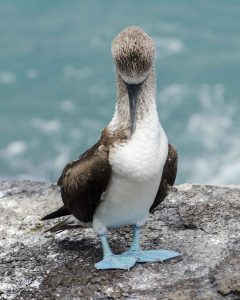 Across the cove, there is a rocky outcropping. It’s worth a climb up the short trail. With luck, there may be Blue-footed Boobies waiting on the other side. Approach quietly and with caution and they will pose for pictures. But go quickly or get too close, and they will fly away in a heartbeat. Wildlife is easier to see on the Galapagos but the more we take advantage of the animals willingness to our presence, the more they will learn to keep their distance.
Across the cove, there is a rocky outcropping. It’s worth a climb up the short trail. With luck, there may be Blue-footed Boobies waiting on the other side. Approach quietly and with caution and they will pose for pictures. But go quickly or get too close, and they will fly away in a heartbeat. Wildlife is easier to see on the Galapagos but the more we take advantage of the animals willingness to our presence, the more they will learn to keep their distance.
Unfortunately, not all humans are kind. Places like Puerto Chino, where tourists can enter without guides are in many ways a test for tourists. We are asked to behave without being monitored or watched. It is places like this that will determine how much more the Park Service opens to the public and how much more they shut down or limit access.
Views at Puerto Chino
If the Blue-footed Boobies are not there, your trip was not wasted. In fact, the best may be yet to come. From this high point, you will be able to look down into the cove itself, its deep blue waters undulating with the waves and tide. And occasionally there is wildlife to see – especially tortoises. Views up and down the coast make the short hike worth it all alone.
As to the name, when we asked our driver where the Chinese had settled in the area, he laughed. The most likely explanation, he told us, is that one of the original settlers of this particular place looked Asian. And the name stuck.
Tips for Puerto Chino
A trip to Puerto Chino is usually combined with a visit to the Galapaguera, El Junco (a freshwater lake), the largest Ceibo Tree in the Galapagos, and possibly a breakfast or lunch at an organic farm in the highlands. You can hire a taxi driver in Puerto Baquerizo Moreno for about $60 for this trip.
- Bring water and snacks
- Bring sunscreen and hat
- Bring swimsuit and towel
- Bring binoculars
- Bring long-lens for your camera
- Beware of strong currents
- Respect the wildlife
[ready_google_map id=’72’]

